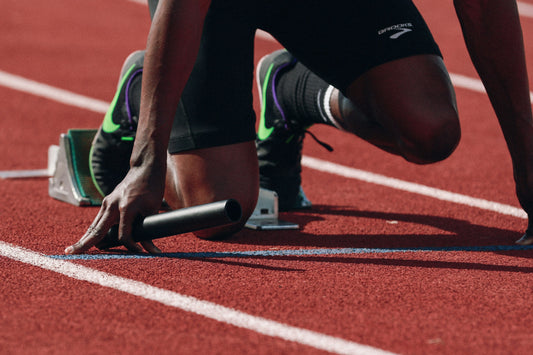Athletes train tirelessly to improve strength, endurance, and skill—but many overlook one of the most powerful performance enhancers available: their breath. Efficient breathing isn’t just about oxygen; it directly affects stamina, recovery, focus, and even injury prevention.
In this article, we explore the science of athletic respiration, how breathing techniques improve performance across sports, and practical tools athletes can use to breathe better, move better, and compete smarter.
Why Breathing Matters in Athletic Performance
When you exercise, your muscles demand more oxygen and produce more carbon dioxide (CO₂). Your breathing must adjust to meet these needs. But many athletes develop dysfunctional patterns—like shallow chest breathing or breath holding—that limit performance and increase fatigue.
“Proper breathing improves oxygen efficiency, delays fatigue, and sharpens mental focus—all critical for high-level performance.”
— International Journal of Sports Physiology and Performance
Key respiratory functions for athletes:
- Delivering oxygen to working muscles
- Removing metabolic waste (CO₂, lactic acid)
- Regulating pH balance in blood
- Stabilizing the core and spine during movement
- Modulating heart rate and nervous system activity
Common Breathing Problems in Athletes
- Over-breathing (hyperventilation): Leads to CO₂ depletion, narrowing blood vessels and reducing oxygen delivery
- Mouth breathing: Reduces nitric oxide production and dries airways
- Paradoxical breathing: Improper diaphragm engagement limits lung capacity and core control
- Breath-holding during effort: Increases blood pressure and muscular tension
The Science Behind Breath Optimization
Efficient breathing helps maintain aerobic energy systems, delay the anaerobic threshold, and reduce recovery time. Breath training has been shown to:
- Improve VO₂ max (maximum oxygen uptake)
- Enhance ventilatory threshold (the point at which breathing becomes labored)
- Increase diaphragm strength, improving respiratory endurance
A 2021 study in Journal of Strength and Conditioning Research found that respiratory muscle training improved performance in elite cyclists by 10–15%.
Breathing Techniques for Athletic Performance
Diaphragmatic (Belly) Breathing
- Promotes full oxygen exchange
- Enhances core stability during lifting and sprinting
- Reduces sympathetic (stress) activation pre-competition
Tip: Practice during warmups—hands on ribs and belly, slow nasal inhale for 4 seconds, exhale for 6 seconds.
Nasal Breathing
- Filters and humidifies air
- Promotes nitric oxide production (vasodilation = better oxygen delivery)
- Reduces hyperventilation and improves endurance
Used in: Running, cycling, martial arts, and even CrossFit for recovery between efforts
Cadenced Breathing
- Matches breathing rhythm to movement (e.g., 2:2 inhale-exhale ratio in running)
- Promotes rhythm, efficiency, and pacing control
- Useful for endurance athletes and swimmers
Inspiratory Muscle Training (IMT)
- Use of devices like PowerBreathe or Expand-A-Lung
- Strengthens diaphragm and intercostal muscles
- Particularly effective in sports with heavy respiratory loads (e.g., rowing, swimming, soccer)
Pre-Performance Breath Control
- Box breathing or extended exhale breathing to calm nerves and reduce performance anxiety
- Helps reduce cortisol and keep focus during pressure moments
Integrating Breath Training into Athletic Programs
- Warm-ups: Begin with 5 minutes of focused nasal breathing
- Cool-downs: Use 4-7-8 breathing to enhance recovery and HRV
- Strength sessions: Incorporate exhale timing with exertion (e.g., exhale during push/lift phase)
- Tracking tools: Use smartwatches or respiratory bands to monitor breath rate and recovery metrics
When to Seek Expert Guidance
Athletes experiencing:
- Frequent side stitches
- Breathlessness despite conditioning
- Vocal cord dysfunction or exercise-induced asthma
Should consult a respiratory physiologist, sports physician, or breath coach.
Final Thoughts
In sport, breath is more than a reflex—it’s a skill. Mastering your respiratory mechanics can give you a competitive edge, support faster recovery, and help you stay calm under pressure. Whether you're a weekend warrior or an elite competitor, training your breath is training your performance.
Resources
- Journal of Sports Physiology and Performance – Breath Training Research
- PowerBreathe IMT Devices: www.powerbreathe.com
- Oxygen Advantage (Patrick McKeown): www.oxygenadvantage.com
- American College of Sports Medicine: www.acsm.org




